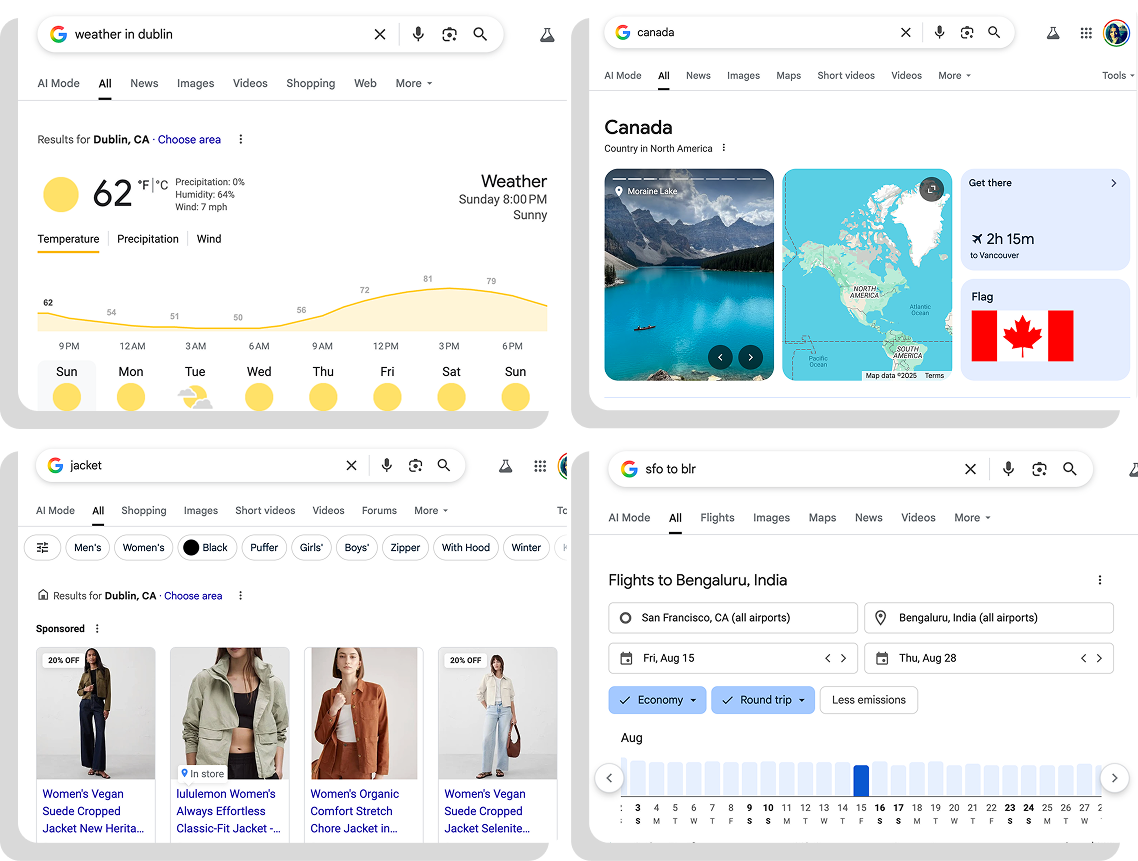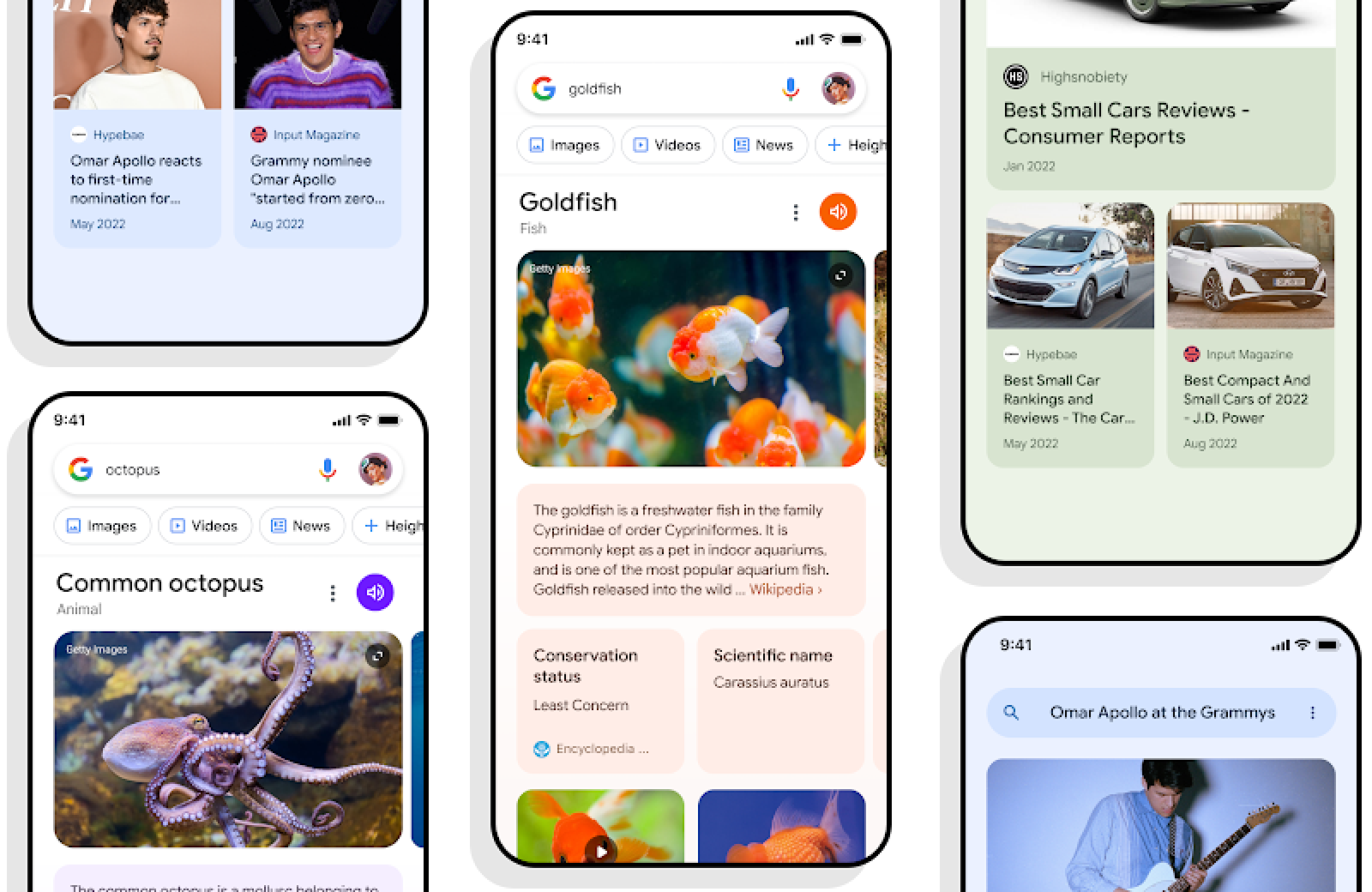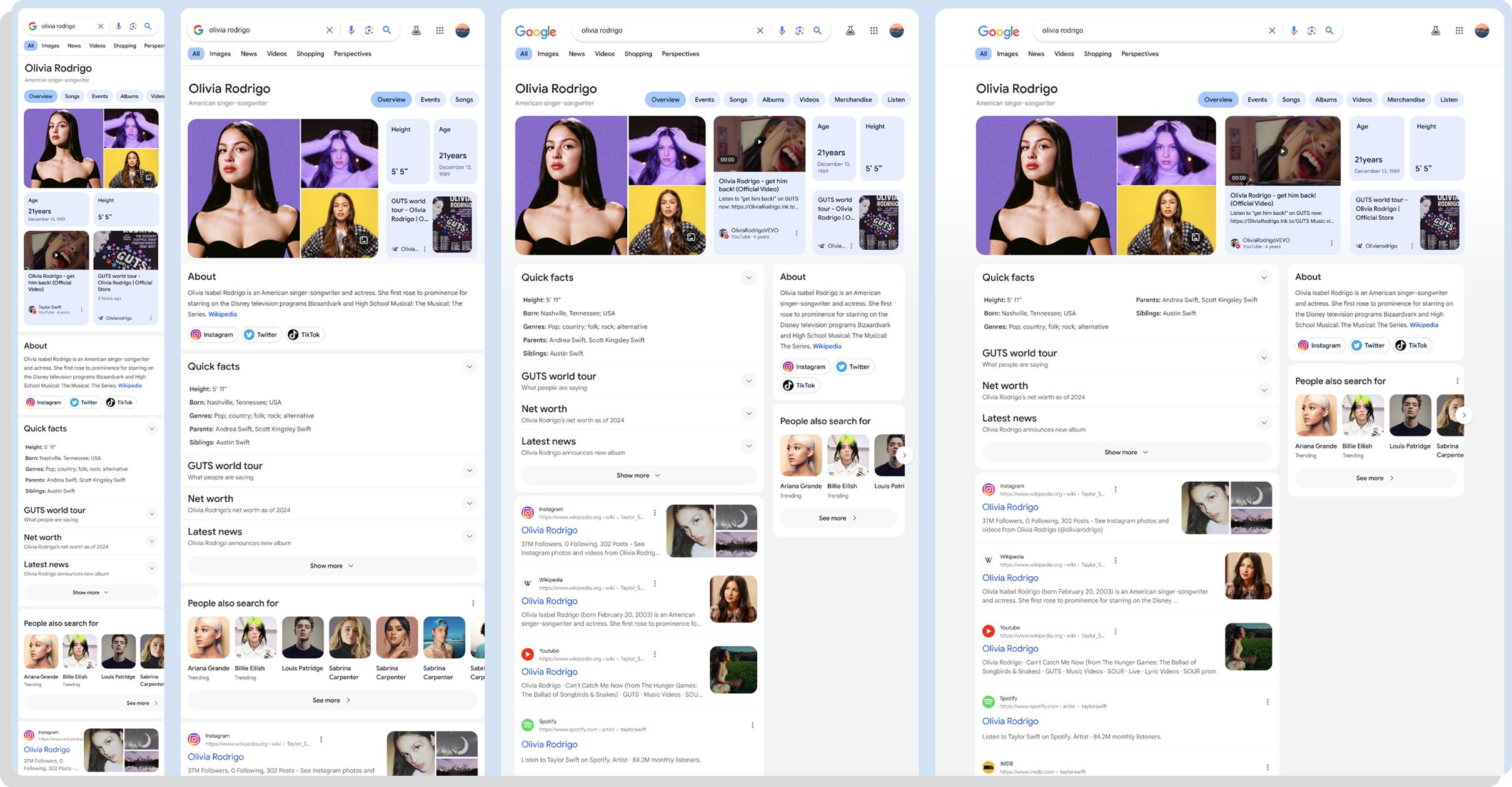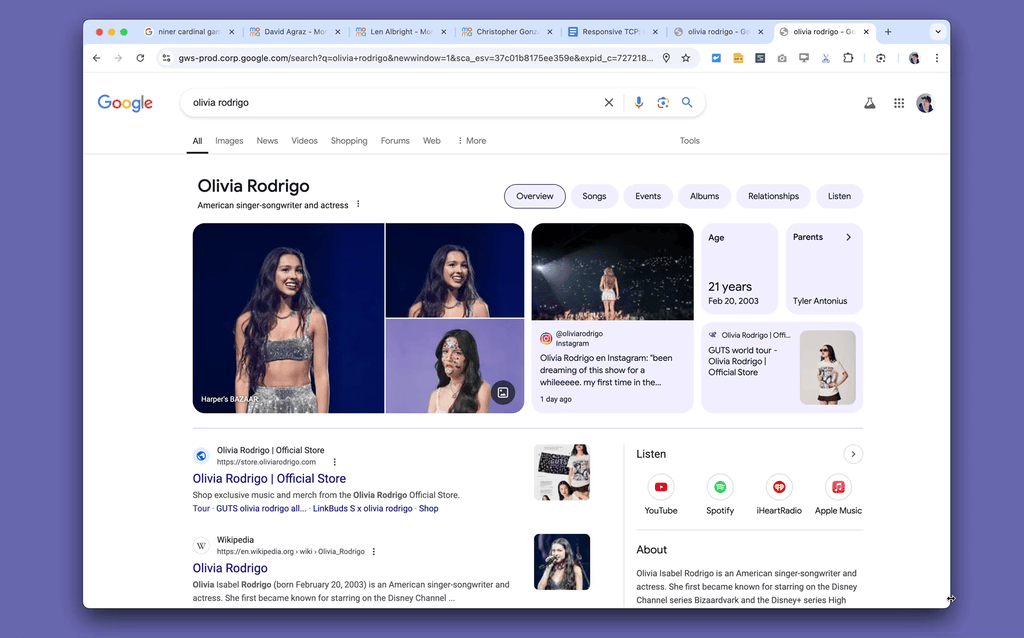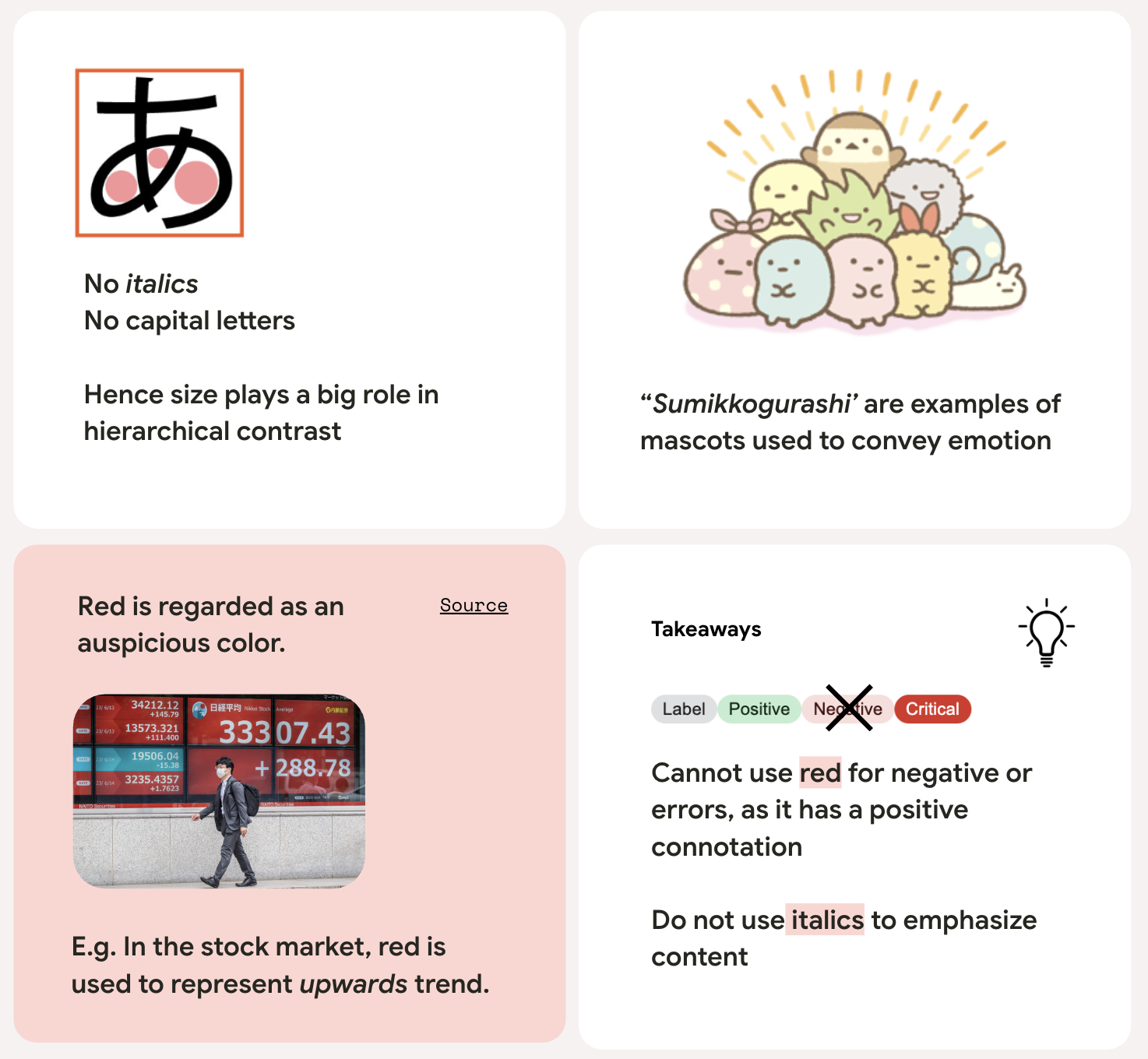Designing at planetary scale
High-impact contributions across Google Search
Google | Interaction Designer | 2024 onwards
What I do
At Google, I lead UX for Responsive Google Search within the Search Design Systems team, shaping the core patterns that define how billions of people experience Search every day. My work spans the foundational elements users see on the results page — everything before they click through.
As one of the most viewed interfaces on the web, Search demands design decisions that are not only elegant but efficient, scalable, and universally clear. Every pixel must balance accessibility, performance, and trust.
I partner closely with Search and AI teams, as well as verticals such as Weather, Flights, Ads, Sports, and Shopping, to ensure a cohesive, inclusive experience across all contexts.
I focus on crafting consistent, accessible, high-quality interactions that keep Search seamless and unified across uses.
My focus is on designing responsive frameworks, accessible components, and interaction standards that scale seamlessly across devices, regions, and content types.
In the past year, I’ve led and contributed to initiatives such as refreshing mobile modules, improving desktop responsiveness and performance, designing for 200% zoom accessibility, and developing tools that proactively flag internationalization issues before launch.
Modernizing Mobile Modules
Overhauling essential mobile modules to deliver a cohesive, modern look and updating experience for millions, partnering with engineers to ensure zero performance loss.
The project effort focused on shifting popular mobile Search components, such as dictionary, time, and weather to a modern design framework.
The modules saw heavy use but were built on obsolete styles and guidelines that had fallen out of sync with the broader platform.
My objective was to align these interfaces with the current design language while maintaining a unified, intuitive, and easy navigation experience.
What I delivered
As the lead designer, I transformed strategic goals into a seamless top-tier user experience, prioritizing quality and performance.
My approach emphasized effective execution and strong cross-functional collaboration:
I led the redesign, creating a flexible visual language for the modules that fit Google’s modern design framework.
I collaborated closely with engineering to tackle technical hurdles, deliver flawless implementation, and ensure no effect on Search’s load speed.
Collaborating with my PM, I crafted the testing strategy and monitored critical engagement and performance data throughout the gradual rollout to validate the new designs.
Updating the visual language while preserving clarity at scale.Why it mattered
Shipped to over 500 million users with no negative impact on performance or engagement.
The new framework cut design and engineering effort for future migrations by 40%.
The design patterns I created create long-term, ongoing impact.
Responsive Desktop Design
Creating a consistent, accessible experience for millions of users across all screen sizes.
Google Search’s web results page was not fully responsive. Over 10% of users on varied screen sizes and densities encountered cropped content modules, disrupting the clarity and reliability of results.
I lead the UX effort to design and implement a responsive framework that scales seamlessly across devices, ensuring that core content remains accessible, performant, and visually consistent.
Designs for a wide range of screen densities.My role and approach
In 2025, I took over as the sole lead designer for this multi-year initiative, driving design direction and execution across high-traffic components of the Search results page.
My responsibility is to ensure that Google’s most essential information - from news and shopping to featured snippets, is usable and legible across all browser resolutions.
Defined responsive layouts for critical Search modules, including the Search box, ensuring visual consistency through Google’s design system.
Established accessibility and internationalization standards, solving for complex scenarios such as right-to-left (RTL) languages, zoom behavior, and WCAG compliance.
Partnered closely with engineering to codify breakpoint logic and implementation rules that supported a vast range of screen variations.
Collaborated with product management to define success metrics and validate impact post-launch, confirming that the new layouts improved usability with no performance regressions.
This work redefined how Search scales across devices — transforming fragmented layouts into a unified, responsive system that upholds Google’s commitment to accessibility and clarity at a global scale.
Inclusivity at scale
To strengthen product quality worldwide, I examined Google Search interfaces for accessibility and global usability potential.
My efforts targeted:
Enhancing designs for high magnification.
Securing seamless functionality in international languages.
Streamlining navigation with keyboards.
Addressing these aspects was critical to delivering a more inclusive experience for millions using assistive tools or non-English languages.
Vital accessibility fixes and designing an AI tool to tackle internationalization challenges proactively.
I built and rolled out fundamental accessibility fixes, establishing guidelines for 200% zoom, understanding and designing for unique internationalization needs.
I determined that internationalization challenges, were an opportunity to refine our processes.
To fix this at scale, I proposed an AI-driven tool to automatically detect internationalization layout errors.
I joined forces with engineers to define the model’s results and documented it to fit into our review system.
Designs to ensure inclusive experiences for non-en usersResolve the most pressing issues users encounter.
At the same time, build a scalable solution to keep these problems from recurring.
My approach
I scoped and initiated comprehensive documentation for scalable designs, focusing on spacing, token use, and multilingual edge cases to equip teams in creating resilient layouts from the outset.
Designing for visually unique text and colors
AI-powered tool to detect i18n issuesWhy it mattered
The accessibility updates fixed numerous identified problems, improving usability for those relying on zoom, keyboard navigation, and screen readers.
The AI tool’s pilot phase flagged hundreds of i18n issues before release, demonstrating its value for a larger rollout.
The design patterns I created were integrated into Google Search’s official design system, raising the quality benchmark for all future projects.


